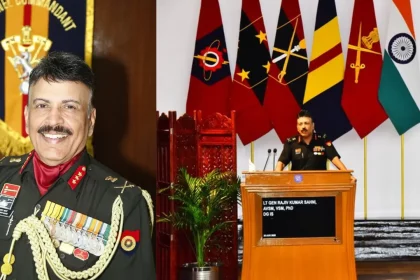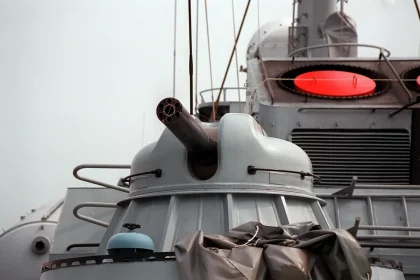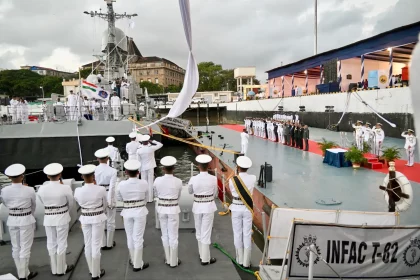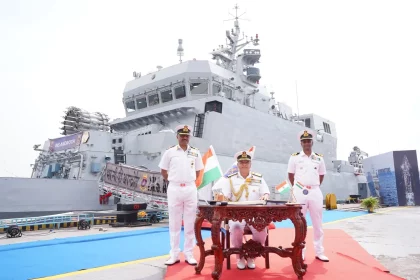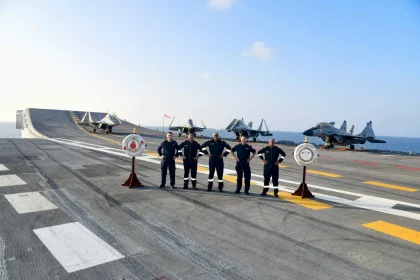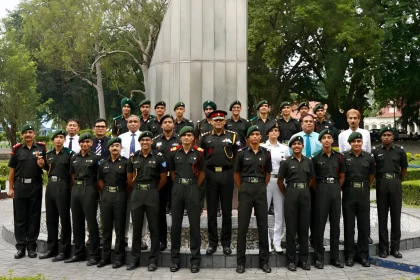Indian Army Leveraged AI During Operation Sindoor, Confirms Lt Gen Rajiv Kumar Sahni
AI tools like Anuman 2.0, ECAS, and TRINETRA played a key role in real-time analysis and mission success during the…
Indian Army to Acquire Six AK-630 Air Defence Gun Systems
Emergency acquisition to bolster India’s short-range air defence against drones and aerial threats along the western border.
INS Abhay and IN FAC T-82 Decommissioned After Three Decades of Glorious Service
After over 30 years of service, INS Abhay and IN FAC T-82 were decommissioned at the Naval Dockyard, Mumbai, marking…
INS Androth Commissioned: Indian Navy’s New Submarine Hunter Strengthens Aatmanirbhar Drive
INS Androth joins the Indian Navy fleet with over 80% indigenous content, marking another milestone in India’s Aatmanirbhar shipbuilding journey.
India, UK Navy Kick Off ‘Konkan’ Exercise in Western Indian Ocean
Both navies deploy aircraft carriers, fighters, and submarines as part of a high-intensity maritime exercise aimed at boosting interoperability and…
RIMC Cadets Excel Again with 82% Success in NDA (II) 2025 Written Exam
RIMC Cadets Achieve 82% Success Rate in NDA (II) 2025 Written Exam, Continuing Legacy of Excellence and Leadership.

